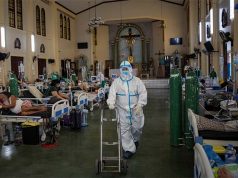
In a social media post, President Rodrigo Duterte’s communications arm recently cited Norway as “Norwegia,” but it was not the first time that the office has committed an error.
On its official Facebook page, the social media team of the Presidential Communications Operations Office shared a picture of Duterte honoring outgoing Norwegian Ambassador Erik Forner with the Order of Sikatuna.
The caption, however, drew flak since it referred to the country of Norway as “Norwegia.”
PCOO’s total budget for 2018 is P1.38 billion, a 4.6% increase from P1.32 billion in 2017.
That’s a whopping P2.7 billion in just 2 years.
And yet, “Norwegia.” #BestAndBrightest pic.twitter.com/dl5M3ioyeh
— JC Punongbayan (@jcpunongbayan) June 14, 2018
There was a flurry of Google searches for the name. Some people pointed out that “Norwegia” is the actual term for Norway—in Polish. But PCOO’s post was written in English.
Actually Norwegia is the official name of Norway in Polish language. So feeling taga Poland ang mga taga PCOO.
— Acid Red, MD 赤酸 (@AcidRed28) June 14, 2018
PCOO’s flubs since 2017: A list
Despite being tasked to deliver “accurate information” for a “well-informed and enlightened citizenry,” the PCOO has been under the spotlight for its errors on the internet and social media.
‘Grammar fail’ on press IDs
In March 2018, reporters of media outlets covering Malacañang were given identification cards containing glaring grammatical errors.
GRAMMAR FAIL!Members of the Malacañang Press Corps could only shake their heads in disbelief after the Presidential…
Posted by Elgin Lazaro III on Thursday, March 22, 2018
A text on the ID read:
“Upon expiration or when resigns from his or her agency, this card should be returning without delay to the International Press Center, G/F National Press Club, Magallanes Drive, Intramuros, Manila.”
“This card to be worn during presidential coverage, but subject to specific accreditation/security requirements. It should be worn all times in entering Malacañang and while inside the Palace grounds.”
Philippine News Agency’s editorial slip
The Philippine News Agency is the official news arm of the government. It is under the News and Information Bureau of PCOO.
In September 2017, it gained attention after it published reports that contained notes of an editor in headlines.
Parang kilala na natin lahat ng staff ng PNA by now hahahahahahaha
KANINONG PANGALAN PA ANG LALABAS?!?!?! https://t.co/T7YdnU3s4Q
— Ronald S. Lim (@tristantrakand) September 8, 2017
Lei, whoever you are, please reangle this. Galit na editor mo ? #bestandthebrightest pic.twitter.com/bOvPGQ4KfO
— Anthony Q. Esguerra (@AEsguerraINQ) September 8, 2017
So, #Aerol is it because that you did not reangle this article that we're still suffering from slow internet? #pakyu #PNA pic.twitter.com/1oGCQINuB0
— Super Ate Gerl (@ate_gerl) September 11, 2017
Prior to that, the news agency also published a photo from the Vietnam War and used it to report a story on Marawi without citation.
LOOK: Gov't news agency PNA uses Vietnam War photo for Marawi-related news. Also fails to credit Wikipedia. pic.twitter.com/yiJRkbnzpH
— Tonyo Cruz (@tonyocruz) May 29, 2017
The state media outlet also used a wrong photo for a labor-related story, uploading a logo of DOLE food company and not of the Department of Labor and Employment.
PNA apologizes for wrong DOLE logo https://t.co/jCV0645MmS pic.twitter.com/F41oFHsSJX
— CNN Philippines (@cnnphilippines) August 11, 2017
Filipinos also tried to catch the UN Human Rights Council’s attention after the PCOO-run agency published an article with an erroneous title of “95 nations in 3rd UPR convinced no EJKs in PHL.”
UN Human Rights Council called out the PNA was incorrect, citing the nations attending the international periodic review in Geneva last year were not convinced that extrajudicial killings are non-existent in the Philippines.
#UPR27 Clarification: #Japan also said they expect #Philippines to ensure accountability in the anti-drug campaignhttps://t.co/3BTqrM2DQ3
— UPR Info (@UPRinfo) May 19, 2017
#UPR27 Clarification: To our best knowledge, 95 states were not "convinced that EJK is non-existent". Full webcast:https://t.co/3BTqrM2DQ3
— UPR Info (@UPRinfo) May 19, 2017
There were also reports indicating that the news agency has wrongly identified a beheading victim in Mindanao in one of its stories. The individual came forward and said that he is alive.
The case of ‘Fafda’
The official Twitter account of PCOO shared a post in August 2017 that baffled its followers.
The communications arm wrote “fafda,” which were eventually compared to US president Donald Trump’s incomprehensible tweet before, “covfefe.”
The #Covfefe tweet was one year ago today. Seems more like a million years ago. pic.twitter.com/27LeuDhwoY
— Nick Kapur (@nick_kapur) May 31, 2018
The controversial martial law video
When Duterte declared martial law over the whole region of Mindanao following the attacks of Maute terrorists, the PCOO released an animated video on Facebook that was deemed by critics as similar to propaganda.
An excerpt of the video’s audio includes: “We will all fight in unity. Martial law should be the rule of the land. Martial law, now.”
PCOO has taken down the video after it faced online criticism. The agency also disowned it and claimed it was “not prepared” by the staff.
The real role of PCOO
Led by former broadcast personality Martin Andanar, the PCOO is the lead communications arm of the government, with the goal to become a “vehicle of understanding for a well-informed and enlightened citizenry.”
One of its missions is to inform, educate and enlightened Filipinos on “matters of national importance for inspiring the citizenry to deepen their civic engagement.”

Last year, an official guide has been drafted for government agencies and offices on the usage of social media platforms to “foster good governance, transparency and accountability, citizen participation, productivity and organizational performance and improvement of public service delivery.”
Under the proposed administrative order, government social media teams are required “to verify information; check grammar, spelling and punctuation; and be quick in admitting mistakes and in correcting inaccuracies.”
As of the moment, however, the administrative order remains in draft form.









